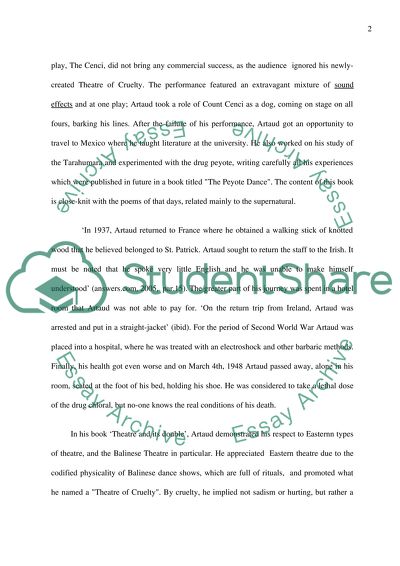Cite this document
(“Theatre of the Absurd Essay Example | Topics and Well Written Essays - 4000 words”, n.d.)
Retrieved from https://studentshare.org/literature/1535227-theatre-of-the-absurd
Retrieved from https://studentshare.org/literature/1535227-theatre-of-the-absurd
(Theatre of the Absurd Essay Example | Topics and Well Written Essays - 4000 Words)
https://studentshare.org/literature/1535227-theatre-of-the-absurd.
https://studentshare.org/literature/1535227-theatre-of-the-absurd.
“Theatre of the Absurd Essay Example | Topics and Well Written Essays - 4000 Words”, n.d. https://studentshare.org/literature/1535227-theatre-of-the-absurd.


